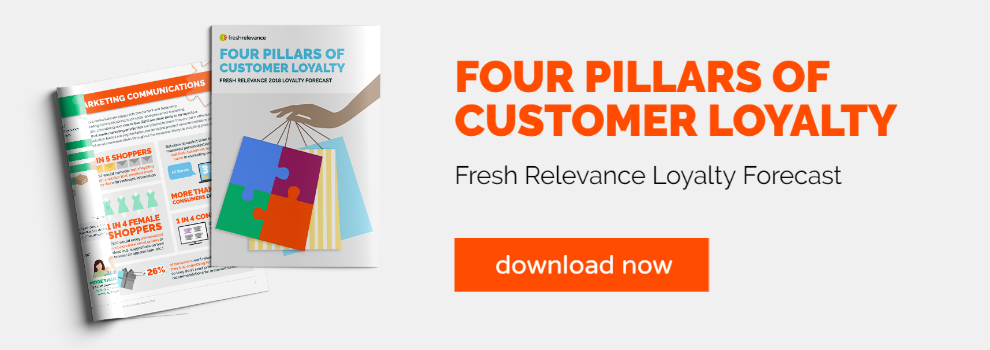With the lockdown continuing to impact online sales (the jewelry/luxury goods sector has seen a drop in revenue to an average of 90%), it’s more important than ever for jewelry brands to optimise shopper engagement and cultivate brand loyalty.
Here are 3 ways to drive customer loyalty through personalization.
Personalization treats each customer as an individual. It means offering tailored marketing messages that are timely and relevant. At its heart, personalization is about creating a unique, seamless experience. You can cultivate loyalty by providing offers that resonate with your customers, anticipate their needs and save them time.
1. Make your emails personal
As jewelry brands direct their attention towards new ways and channels to improve customer loyalty, it would be easy to neglect tried and tested marketing tactics such as email. But email is still a powerful tool, given that it remains the marketing channel that delivers the best ROI. What’s more, our research shows that over a quarter of customers are more likely to remain loyal to a brand that sends relevant, personalized emails.
It’s becoming more and more important for brands to stand out, and tactics such as tailoring emails to each shopper’s actions and inactions are an effective way to deliver a personalized experience that resonates with shoppers and drives brand loyalty.
Personalized product recommendations
Try using personalized product recommendations to show your customers what they actually want to see. Connect product and customer data to make sure you display the most relevant products to each person and choose the recommendation strategy that best fits the individual’s stage in the purchase process, whether that’s cross-selling, up-selling or deep-selling.
Dynamic images
Email copy isn’t the only way to get personal. As soon as a recipient opens your message, it’s the images that grab their attention. Combine dynamic content with behavioral and contextual data so you can respond to the shopper’s interests and brand preferences as well as location, season and weather.
Learn more: Make the most of dynamic images in emails
2. Keep the customer journey smooth
For jewelry retailers who want to maximise customer loyalty, delivering a smooth customer experience online – from start to finish – is key. In fact, 60% of customers wouldn’t buy online if a website is difficult to navigate.
A great way to keep the customer journey smooth is to tailor onsite content to the shopper’s interests. This can be achieved through dynamic banners, pop-ups, product recommendations and more, that update at the moment of engagement based on the behavioral and contextual information collected about each shopper. By displaying products based on the customer’s favorite styles or types of jewelry, customers can easily discover more items they might like.
Here are three areas of your website you should consider adding personalization to:
1. Homepage
Each customer is unique, so make sure you deliver a personalized experience from the get-go. Use data you have about the customer to personalize the homepage, for example, showing products in their favorite color.
2. Search page
Make the right products stand out with a search page that’s personalized for maximum relevance. Serve product recommendations based on search results and add social feeds to inspire and increase engagement.
3. Pop-ups and popovers
Pop-ups and popovers offer an extra opportunity to target customers in a personalized way. Delight your returning shoppers with a welcome back message.
Learn more: The Complete Guide to Ecommerce Personalization
3. Perfect the instore experience
Although online shopping boasts unlimited choice, the in-store experience remains a powerful tool in allowing shoppers to get a better feel for products and experience the brand with all their senses.
When buying something as personal – and often expensive – as jewelry, customers want that extra special experience. As such, the traditional in-store shopping experience can be transformed through in-store promotions, personal styling experiences and complimentary services. Our own research shows that almost one in four shoppers are more likely to be loyal to a brand that offers related amenities like personal stylists.
Ultimately, the goal of all marketing activity is to provide shoppers with products and services tailored to their preferences. This will not only catch the attention of first-time shoppers but ensure that customers return for more. The good news is that marketers now have access to more real-time customer data than ever before, as well as the tools to execute on those insights.
Find out more about fostering customer loyalty with Fresh Relevance.
This post originally appeared on Retail Jeweller.







